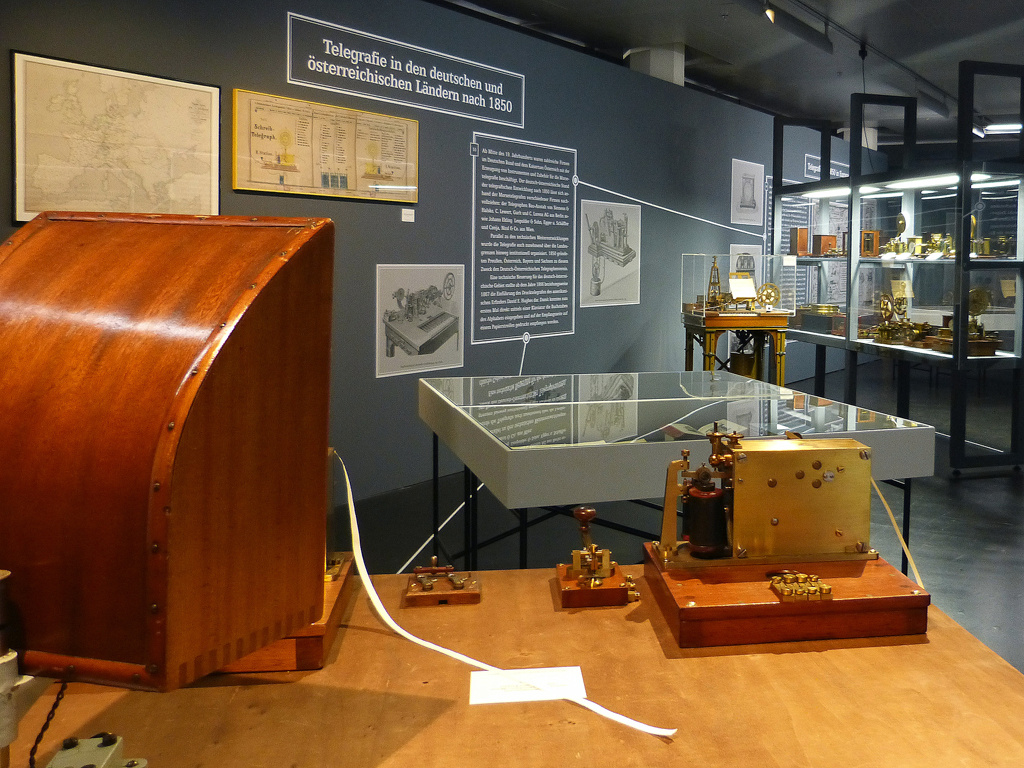GLOBALE: The Infosphere of the 19th century
Fri, November 13, 2015 – Sun, June 26, 2016
- Location
- Atrium 2
As an integral part of the »Infosphere« exhibition, the presentation of the history of telegraphy comprises information on the technology of the instruments, as well as on the stages of network expansion, while offering visitors insight into the era of evolving global communication. For the foundation of today’s interconnected global society was laid by a tremendous technical development that took place within just approximately one hundred years.
Electrical research in the early nineteenth century laid out the basic physical principles of electrical telegraphy. In physics, the work of Alessandro Volta, Hans Christian Ørsted, André-Marie Ampère, Georg Simon Ohm, and Michael Faraday, above all, were of elementary significance. During the second half of the century, a global telegraphy network evolved, which, for the first time, permitted rapid transmission of written messages over large distances – a function that today is fulfilled by the Internet.
Of all the inventions made in connection with electrical telegraphy, that of US scientist Samuel Morse has proved by far the most successful. Until about the middle of the twentieth century, Morse telegraphy remained the proven means of written communication, and was used for postal and railway services, by the military and the press, as well as for sea rescue and weather services. The transmission of telegrams by electric means required the spanning of overhead landlines, as well as the laying of cable in the ground or sea. Overcoming great distances was an immense challenge and major achievement, such as the first transatlantic cable from Ireland to Newfoundland, which went into operation in 1866. Telegraphic long-distance connections – such as the connection from England via Germany, Russia, and Persia all the way to India – were, during the colonial era, of major importance to the European countries.
Guglielmo Marconi’s 1897 invention of wireless telegraphy made wide-scale coverage possible and laid the foundation for modern radio communication via satellite.
The modul is part of the exhibition »Infosphere«
13.11.2015–26.06.2016
ZKM_Atrium 2, 2nd floor
Collection: Franz Pichler
Item on loan: Museum for Communication Frankfurt am Main, Museum for Communication Berlin.
Imprint
- Curator
- Co-Curator
- Co-Curator
